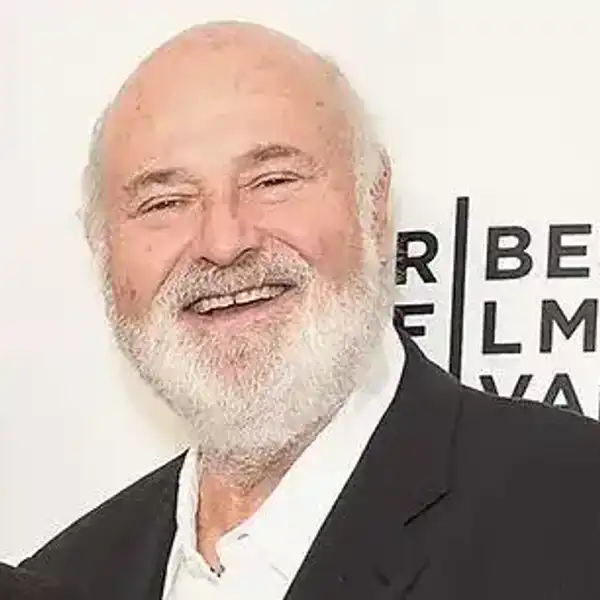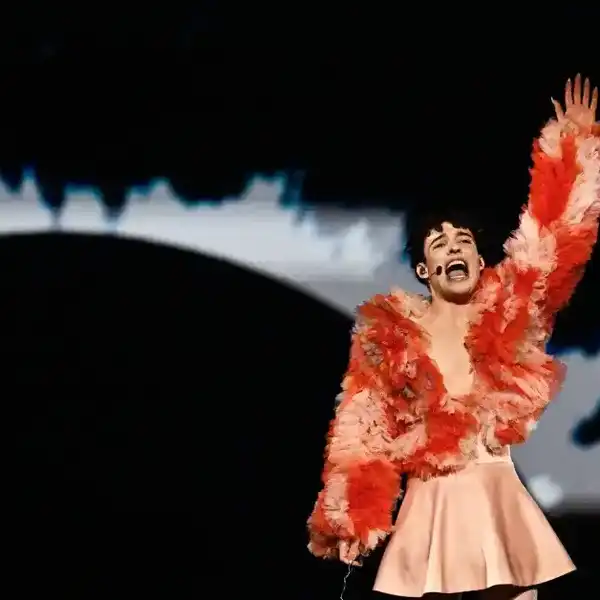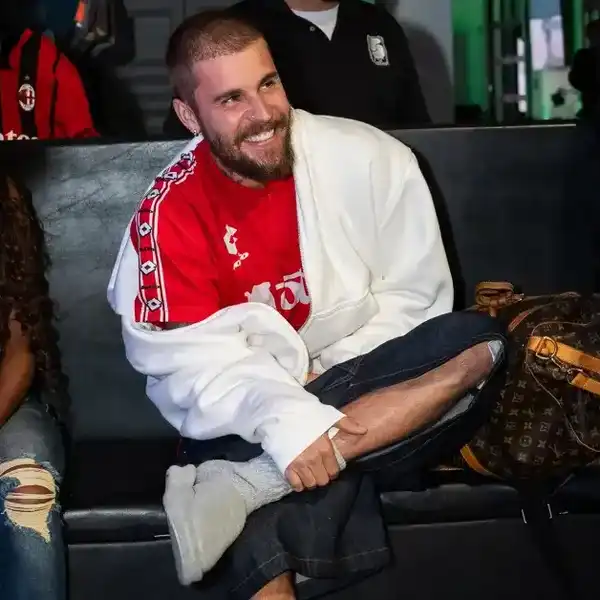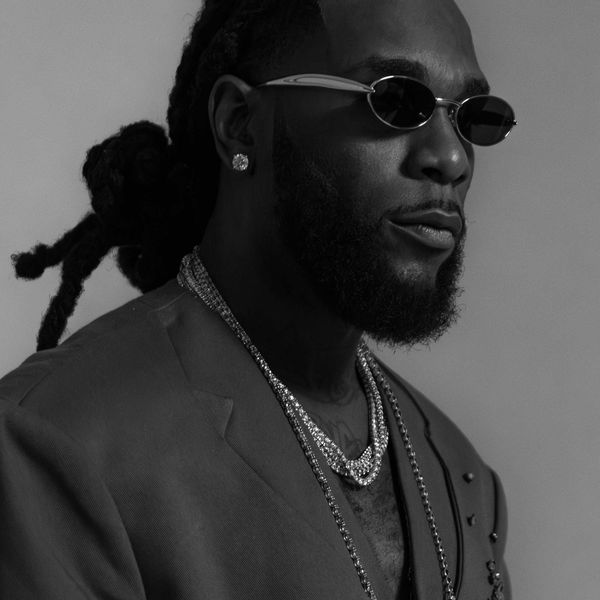Billboard Canada Power Players 2025: Meet the Executives Behind Live Nation Canada's Record-Breaking Year
With the company about to open the new Rogers Stadium in Toronto and putting more music in front of more fans across the country than ever before, Riley O'Connor, Erik Hoffman and Melissa Bubb-Clarke are Billboard Canada's No. 1 Power Players of 2025.
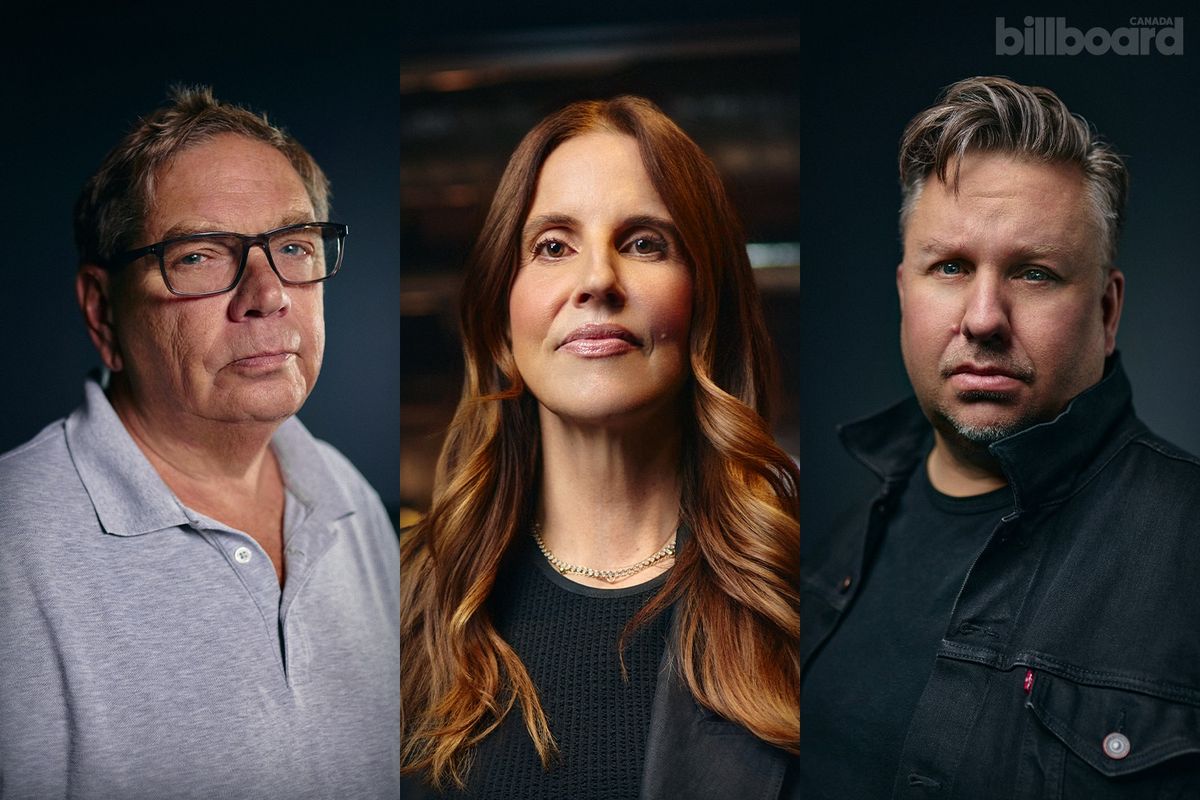
Riley O'Connor, Melissa Bubb-Clarke and Erik Hoffman shot in Toronto in 2025 by Samuel Engelking.
At the beginning of 2024, Live Nation Canada’s President of Music Erik Hoffman got off a phone call that left him feeling deflated.
It was a meeting with the worldwide tour promoter behind Coldplay, whose Music of the Spheres tour was in the process of becoming the highest-grossing rock tour of all time. Live Nation was in talks to bring the tour to Toronto, which would have been an obvious win. But there was one problem: there was no venue big enough to host them on their available dates.
The Toronto Blue Jays had a home stretch booked at their home stadium, Rogers Centre, and as the primary tenant, the Major League Baseball team took precedence.
“It was just sighs all around,” Hoffman remembers. “At the end of the call, the promoter said ‘can’t you just build us a stadium’?”
A year and a half later, Live Nation actually did. Rogers Stadium is on track to open at the end of June with a full slate of concerts. And they’re all on track to sell out.
The 50,000 capacity open-air venue will open at the former Downsview Airport site in North York with a concert by K-pop stars Stray Kids, followed by four concerts by Coldplay on July 7, 8, 11 and 12. Among others, the venue will also host global girl group BLACKPINK’s world tour on July 22 and 23 and the first North American dates on one of the buzziest tours of the summer, the reunion of Oasis on August 24 and 25.
Rogers Stadium is a temporary solution, built to address the demand for large-scale shows on land that will be redeveloped by Northcrest Developments over the next half decade. But it’s a tangible symbol of the grandness of Live Nation’s plans in Canada. Already the biggest players in the Canadian music business, the company is just getting bigger – and they’re on track for a record-breaking summer.
As top execs at Live Nation Canada, Hoffman, Chairman Riley O’Connor and Chief Commercial Officer Melissa Bubb-Clarke are orchestrating one of the most ambitious stretches in the company’s history. Together, the trio claim the No. 1 spot on the 2025 Billboard Canada Power Players list.

When Rogers Stadium was first announced, there was online skepticism peppered amongst the celebration. How many current artists can even sell out a stadium show, some people wondered?
Enough to sustain two stadiums in Toronto, it turns out. Rogers Stadium is tracking towards a 100% sell-through rate, and that instantly doubles the number of stadium shows.
“Actually, it’s more like triple,” Hoffman says, sitting with his fellow Power Players in the boardroom of Live Nation Canada’s Liberty Village head office. “In terms of full-size stadiums, there hasn’t been more than eight any given summer here by us [Live Nation]. Eight shows. We have 25 this year.”
That also includes a record number of concerts at the also-50,000-plus capacity baseball stadium, Rogers Centre. That’s not to mention a record number of shows coming at the 16,000 seat amphitheatre Budweiser Stage and nearly 4,000 shows happening at venues of every size owned or operated by Live Nation throughout the country. As far as number of fans reach, they say, this year is an easy record.
With one major exception – Taylor Swift’s Eras Tour, which was promoted by Messina Touring (though the Live Nation-partnered Ticketmaster sold the tickets) – the company has had its fingerprints on nearly all of the biggest shows coming through Canada over the past year. Globally, Live Nation oversaw six of the top 10 entries on Billboard Boxscore’s Top 100 Tours chart, including Coldplay, whose Music of the Spheres trek passed $1 billion in July. In February, Live Nation reported it had achieved a record $2.2 billion worldwide in adjusted operating income in 2024, up 14%, on record revenue of $23.5 billion, up 2%.
To understand the significance of this moment, you just have to talk to Riley O’Connor. He’s been the Chairman of Live Nation Canada since the company acquired House of Blues, where he had been an executive since the ‘90s. But his history goes back even farther, to the early 1970s, first as a roadie before starting an illustrious and long-running concert promotion career. At this year’s Junos, O’Connor accepted the Walt Grealis Award for his contributions to the industry.
But despite all his years in the live music business, he never would have predicted it getting to the scale it’s at now.
“I never imagined it would do anything like this,” he admits.
The business was very different in his early days, he says. It was extremely territorial back then, with individual promoters asserting control of their own markets. Many were one-man operations in those rough-and-tumble days, with one singular point of contact communicating with bands and taking care of all management and organization.
“When I started out, it was Gunslinger World,” O’Connor says. “It grew up into a great industry.”

Hoffman’s story starts later than that of O’Connor (who he calls “a legend in the business”), but he is a lifer too. In the business for three decades, he started as a live sound engineer and tour manager before also joining Live Nation by way of House of Blues, moving to Vancouver from Ottawa to book the historic Commodore Ballroom.
He remembers a time when live music was treated by many in the industry as a promotional tool. For many of the top artists, live music was a secondary driver to record sales and radio play – the real markers of success. Working musicians could make a living on the road, but it wasn’t the centre of the music business.
“There was a real feeling of concert promoters being second-class citizens,” says Hoffman. “[We were] down in the pecking order of who should be speaking to the artist.”
Melissa Bubb-Clarke made the top 10 of the Billboard Canada Power Players list last year for a different company, Maple Leaf Sports & Entertainment (MLSE). She was the SVP of Music & Live events, which included programming at Scotiabank Arena and Coca-Cola Coliseum.
She’s worked at and with Live Nation in a variety of marketing and partnership roles throughout her career (where she first started as a receptionist nearly three decades ago), but returned officially this year in a prime new position: Chief Commercial Officer.
Working at a live entertainment company that primarily dealt in sports, Bubb-Clarke brings a different perspective to the explosion in live music.
“From a corporate partnership standpoint, sports was super viable in big business, and music was kind of confusing to people,” she says. “Now it’s evolved and become such a massive platform for not just the artist and the fans together – it's also become a platform for a lot of brands and corporate partners to be part of.”
While corporate sponsorships aren’t new in music, they’ve become much more valuable. One reason for that is the sheer scale. When artists can routinely sell out stadium-sized venues, and fans will pay large amounts of money for tickets to those shows, passionate and engaged consumers are extremely sought-after. That’s led to record profits for Live Nation, both in Canada and worldwide.

A few things happened in the music industry over the last few decades to make concerts such a powerful sector. Music went increasingly online, and the rise of streaming services devalued records. Live music became a primary revenue stream for many artists, some of whom shifted their traditional record cycle to release music in more frequent and shorter bursts while touring for longer. Concerts got more spectacular to suit the bigger venues they were filling.
“You used to go to a stadium, and it sounded like s–t,” admits Hoffman. Ticket prices rose as the productions got more expensive.
The industry professionalized. The wild west of chainsmoking, fiercely territorial promoters got tamed. Many of the scrappy punk rock and beer-bred Canadian promoters are still around. Some, like last year’s No. 1 Power Player Arthur Fogel and Live Nation’s head honcho Michael Rapino are in top global roles. But professionals from other industries got involved too, many with corporate, sales and marketing backgrounds.
“Entrepreneurs started the business, but then a lot of other really talented folks got into it and made sense of it,” says Hoffman. “They helped grow it up.”
No longer a regional business, live music became a global industry. The touring market became more connected, with promoters able to plan tours throughout the world – including some of the world’s largest shows in recent years by artists like Madonna and The Weeknd in Brazil or Adele in Munich.
North American markets embraced more global artists too. Live Nation Canada has made key hires in recent years to build huge local concert markets for South Asian and Latin music. Punjabi star Diljit Dosanjh set records this year with his stadium shows at Toronto’s Rogers Centre and Vancouver's BC Place in partnership with Live Nation. Some of the most fervently sought-after tickets at Rogers Stadium this summer are for South Korean pop acts.
It’s not just the music industry that got more connected – it’s Live Nation too. Already the biggest players, the company is controlling more and more of the market share, which has led to charges of monopolization. The company has been accused of driving up ticket prices through vertical integration – owning venues, controlling ticketing through Ticketmaster and driving out competition. In the United States, Live Nation is facing a high-profile antitrust lawsuit from the Department of Justice.
In Canada, Live Nation has made serious inroads. Toronto, specifically, is now one of the most popular destinations in the world for touring musicians. “It’s where we notice the growth the most, because it’s become this must-play global market,” Hoffman says. “It’s a place you absolutely can’t skip.”
The company’s portfolio of venues it owns or partners with has ballooned in the past few years, with rooms of every size – from the intimate Velvet Underground to the 950-cap Opera House to the 2,500-cap History up to Budweiser Stage and Rogers Stadium. Live Nation recently announced it is reviving the Mod Club after buying what was then known as Axis Club.
It’s expanding in secondary and extended markets too, recently taking over programming at the historic Muskoka, Ontario venue the KEE to Bala. Live Nation will be a partner in Oak View Group’s multi-million dollar rebuild of the Hamilton Arena formerly known as FirstOntario Centre, and is building a new version of its popular History venue in Ottawa slated to open in 2026.
That gives artists more opportunities to tour in Canada without having to travel a long distance or cross the border during a volatile time for travel to the U.S. It also creates the opportunity for higher profile touring acts to tour in different cities and for the scale of concerts to improve.
“That's our ambition in a lot of these Canadian secondary markets. What’s missing? Or what's not good enough from an artist and fan experience? Let’s try to fill the holes,” Hoffman says.
It also makes it harder for independent promoters and operators – who, historically, have thrived in smaller markets – to compete with the juggernaut company, its network and its resources.
For their part, the executives say the perception that Live Nation is buying up all the venues is overblown.
“There's hundreds of venues in Canada. We have something like 1%,” says Hoffman. “The narrative about people being uncomfortable with us going in and helping or partnering to save a classic venue, or building facilities where you want to see an artist and there’s actually nice bathrooms, it’s helped very few people – and certainly not the people buying concert tickets or the artists playing there.”
As concerts get more profitable, the venues that host them have become better places to watch a show. Venues like Rogers Stadium and the upcoming Hamilton Arena are built for music first, without a primary sports tenant. There’s more thought and money put towards sound and production, artist hospitality and facilities.
“These are purpose-built,” says O’Connor. “It's about the fan experience: coming in and experiencing something that's all about them and their artist.”
Hoffman agrees, glancing at his colleague who used to work for MLSE, Bubb-Clarke, across the board room table.
“Going in [to do concerts] at those unbelievable sports palaces, you’re always aware you’re the visiting team,” Hoffman says. “The idea of these venues is that you're the home team.”
As part of her role at MLSE, Bubb-Clarke expanded premium seating and special events – a paradigm that is well-developed at sports venues full of box seats and members clubs, and is now developing in music as well. At venues like History, there are multiple different options for tiered VIP experiences, which is something that is spreading throughout the industry.
“There's still a real opportunity in music and we've seen that for a long time,” she says. “We’ve seen the person who maybe has a bunch of disposable income and might work on Bay Street, but is a massive Iron Maiden fan. When they come to the venue, they want a premium experience.”
The biggest challenges Live Nation Canada faces now are infrastructure – like getting enough parking for 50,000 fans at Rogers Stadium (the company has advised fans to take public transit). Other than that, it’s mostly just finding enough space to put enough music in front of the number of fans that are demanding it.
“There are more opportunities for artists to go out and show their wares, and there's more concerts than ever before. So there are more people participating than ever before,” marvels O’Connor. “It’s a remarkable growth.”
Because the market has expanded, the possibilities are bigger – which is one of the things that brought Bubb-Clarke back to work at Live Nation. This is gearing up to be another record year for Live Nation, but it feels like the ceiling is still much higher.
“I come back to the word ambitious,” she says. “When I heard about Rogers Stadium and the likes of Oasis and Coldplay coming, I thought ‘I want to be back on the side of the company that's doing that.’"
- Coldplay’s Record-Breaking Tour Is Coming to Canada — Here’s What to Expect | Billboard Canada ›
- La tournée record de Coldplay débarque à Toronto : voici ce qui vous attend | Billboard Canada ›
- Music Biz Headlines: Live Nation Hits Revenue Record, Melissa Auf der Maur Writes '90s Rock Memoir | Billboard Canada ›
- Global Report Finds Canadians Prefer Live Music As Favourite Form of Entertainment | Billboard Canada ›
- Selon un rapport de Live Nation, les Canadiens préfèrent la musique en direct comme forme de divertissement favorite | Billboard Canada ›




